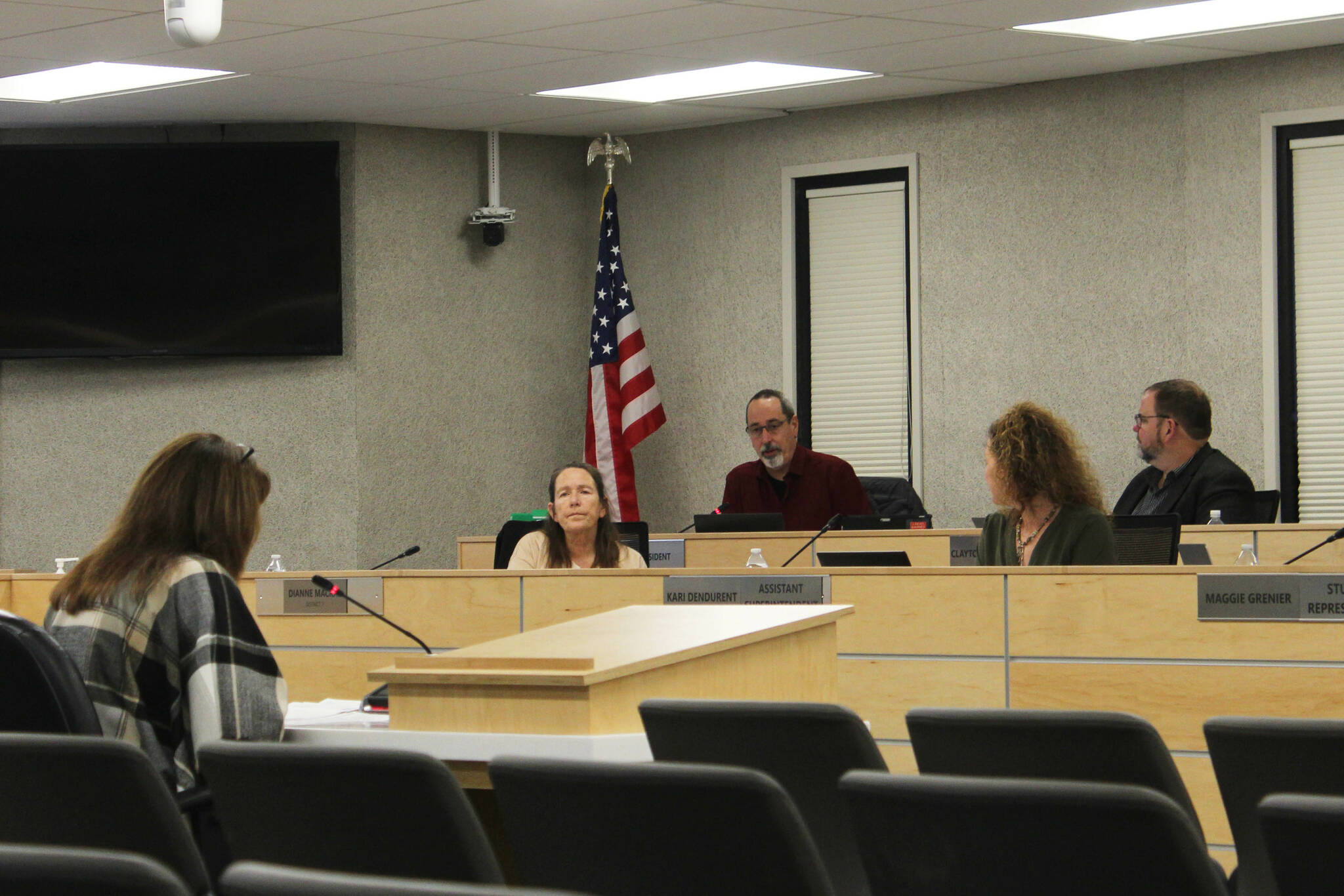The Kenai Peninsula Borough School District on Thursday sent out 110 more teacher contracts following approval by the school board during a special meeting. The contracts are for the district’s non-tenured teachers and for teachers who will become tenured if they return for the following school year.
Thursday’s meeting came two days after board members convened to plan out the district’s immediate financial future. Staring down a $16 million deficit, board members were hesitant to make any permanent decisions without knowing for sure how much money the district will get from the state for the upcoming fiscal year.
The board in February approved contracts for tenured staff, for administrators and for non-tenured staff whose positions are historically hard to fill: special education, high school counselors and positions at remote schools.
KPBSD Superintendent Clayton Holland said Thursday that the district in recent years has worked to get staff contracts out in February and March, but that historically contracts usually go out in March and April.
“We can’t wait that long anymore,” he said.
With employees across the board in short supply, the district wants to take extra steps to retain staff. In this case, that means offering job security earlier in the year than usual.
The approval of contracts Thursday, Holland said, also comes with a hiring freeze for general education positions. From there, the district will be in a “holding pattern,” he said. KPBSD will not hire any new staff until it knows how much money it will get from the state and how many current employees plan to return next school year. Issuance of the contracts kicks off a 30-day period during which employees can either sign their contract or tell the district they won’t be returning.
KPBSD Human Resources Director Nate Crabtree on Monday presented to the school board a spreadsheet that showed how many of the approximately 309 general education contracts issued in February had been returned. Of the 40 contracts that were still outstanding on Monday morning, 11 were returned as resignations by Wednesday afternoon.
Assuming that the trend continues, and 25% of all the contracts issued will come back as resignations or retirements, Crabtree said the district is unlikely to be overstaffed next school year. That’s even if the board opts to increase the district’s student-teacher ratio by five as a cost-savings measure. The board has considered increasing that ratio to offset the district’s budget deficit.
“We’re relying on historical data to make a decision moving forward,” Crabtree told board members Wednesday. “From Monday to today, those numbers have held true and I have no reason to believe that they won’t continue to hold true, meaning what you’re about to approve is a good, rational reasonable decision.”
There is a risk to the school district if it builds a budget around an amount of money that is subject to change.
The Juneau School District last year, for example, built its budget under the belief that the state would increase the per-student funding amount by at least $430. After Gov. Mike Dunleavy vetoed half of the one-time funds passed by the Alaska Legislature, schools received just $340 more per student. The difference created a $758,000 shortfall for the district that it didn’t have enough money to cover.
A majority of KPBSD school board members on Tuesday directed Finance Director Elizabeth Hayes to start putting together a budget document that assumes an $680 per-student funding increase from the state as approved by lawmakers last month in Senate Bill 140, citing confidence in bipartisan approval of the package. Board members also directed Hayes to bottom out the district’s savings account.
“I have a majority of the board members wanting to start with $680,” Board President Zen Kelly said Tuesday. “I had a majority the board members want to use all of our unassigned fund balance at this point in time. That means that the conversation right now is kind of over and we’re merely waiting on what the Legislature and the governor are going to do.”
Board members on Thursday said that although approving non-tenured teacher contracts at this stage in the game is unusual, the value of being able to offer security to staff is important.
“I’m just thankful that we were able to talk this through and get this done,” said board member Jason Tauriainen. “I know it’s a little bit out of the norm for us to have a special meeting to do something like this, but I believe this is real important especially (with) the difficulties that we’re having acquiring new teachers.”
Kelly said Thursday via text that, in deciding to move forward with the contracts and financial plan, the board wants to trust that the compromise that led to Senate Bill 140 can provide stability moving forward.
“At this point we are starting our draft budget process with the amount we need in state funding at a minimum to not drastically cut positions and services,” he said. “A $680 increase to the BSA and draining our unassigned fund balance, we are able to proceed with minimal cuts.”
Dunleavy has until March 14 to either sign, veto or not sign Senate Bill 140. If he doesn’t sign the bill, it will become law without his signature. Dunleavy indicated shortly after the Legislature passed the bill that he would veto it if his other education priorities were not also passed.
Reach reporter Ashlyn O’Hara at ashlyn.ohara@peninsulaclarion.com.
This reporting from the State Capitol was made possible by the Alaska Center for Excellence in Journalism’s Legislative Reporter Exchange. Alaska news outlets, please contact Erin Thompson at editor@peninsulaclarion.com to republish this story.


